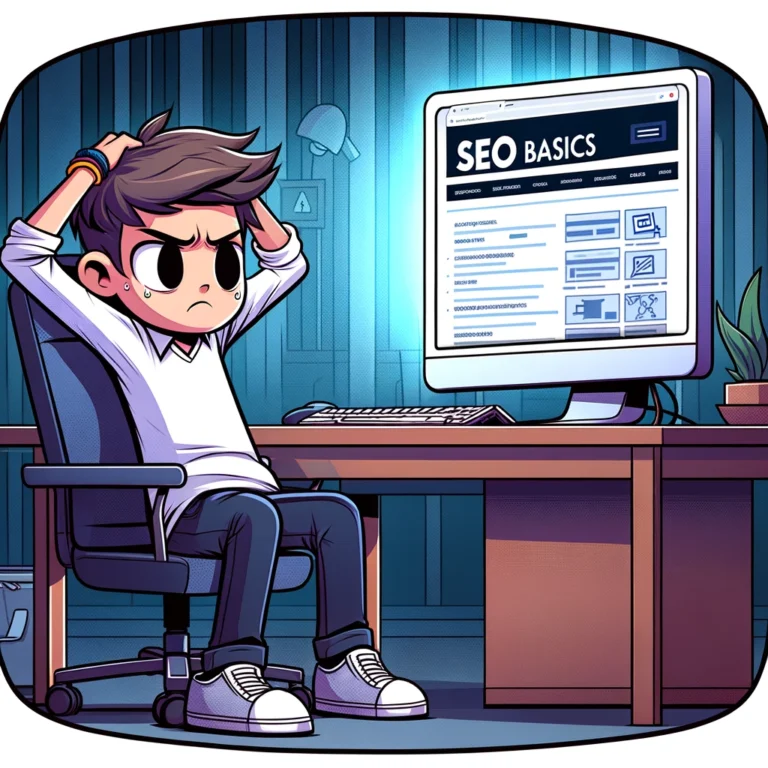Optimizing your web page for search engines, often referred to as SEO (Search Engine Optimization), is crucial for any website owner or content creator. It’s not just about making your site visible on search engines like Google, Bing, or Yahoo, but also about ensuring that visitors find your content relevant and engaging. If you’re new to this or setting up your first page, you might feel overwhelmed, but don’t worry! Here, we’ll break down the essentials of SEO in a manner that’s easy to understand and implement.
Understand the Basics of SEO
Before diving into the technicalities, it’s important to get a grasp of what SEO entails. At its core, SEO is about enhancing your website’s visibility in the organic (non-paid) search engine results. There are numerous tactics to achieve this, but they all boil down to two main categories: on-page SEO and off-page SEO. For now, let’s focus on on-page SEO, which deals with the elements you can control on your website, such as content, structure, and HTML code.
Pick the Right Keywords
Keywords are the cornerstone of on-page SEO. These are the words and phrases that searchers type into search engines and are also the terms you think your potential visitors might be searching for. When selecting keywords, it’s critical to:
- Think like your audience: What words or phrases would they logically use to find your content?
- Use keyword tools: Utilize tools like Google Keyword Planner, SEMrush, or Ahrefs to find keywords that are relevant and not too competitive.
Incorporate these keywords naturally into your content, especially in critical places like titles, headings, and the opening paragraphs. However, avoid keyword stuffing — excessively filling your content with keywords — as this can lead to penalties from search engines.
Craft Quality Content
The phrase “content is king” continues to hold true in SEO. Search engines favor content that is not only keyword-rich but also informative, valuable, and engaging. Every piece of content on your website should serve a clear purpose and meet a need for your audience. It should also adhere to the following:
- Originality: Ensure your content is original and not duplicated from other sites.
- Relevance: Stay on topic and provide useful information that matches the search intent behind your keywords.
- Engagement: Write in a way that speaks to your audience, keeps their attention, and encourages interaction.
Optimize Your Tags
Title tags and meta descriptions are crucial HTML elements that can affect your SEO performance. They provide search engines and users alike a quick insight into the content of your web page:
- Title Tag: This is the clickable headline that appears in search engine results and should be 5060 characters long. It needs to include your main keyword and be compelling enough to encourage people to click.
- Meta Description: Although not a direct ranking factor, this brief description (about 150160 characters) is essential as it describes the page content and can influence clickthrough rates.
Use Header Tags to Structure Content
Proper use of header tags (from `<h1>` to `<h6>`) helps organize your content into sections that are easier to read and navigate. Usually, `<h1>` tags are reserved for your main page title, with subsequent headers (`<h2>`, `<h3>`, etc.) marking subheadings and points of emphasis. This hierarchical structure is not just user-friendly; it also helps search engines understand the content of your page better.
Pay Attention to URLs
The structure of your URLs can impact both user experience and SEO. URLs should be simple, understandable, and include keywords where possible. Good URL structure can help search engine algorithms understand what the page is about and improve the chances of ranking better in search results.
Monitor and Adjust
SEO is not a one-time setup. It’s a continuous process of improvement. Monitor your page’s performance using tools like Google Analytics and Google Search Console. These tools can provide insights into how users are interacting with your site and help identify areas for improvement. Implementing SEO on your web page does not have to be overwhelming. Start with these foundational steps, and you’ll make your website not only more visible in search engine results but also more attractive to visitors. Remember, SEO is as much about pleasing your audience as it is about adhering to the technical aspects favored by search engines.

Implement Internal Linking Strategies
Internal linking is a critical element of on-page SEO that is often overlooked. By creating links from one page on your website to another, you’re not only improving navigation for your users but also allowing search engine spiders to crawl your site more effectively. Internal links help distribute page authority throughout your site and increase the overall crawlability, which can positively impact your rankings. When you link internally, keep these best practices in mind:
- Link relevant content: Your links should connect pieces of content that are topically related. This enhances the user experience by providing additional, relevant information and keeps users engaged with your site longer.
- Use descriptive anchor text: Instead of generic phrases like “click here,” use descriptive text that indicates what the user will find when they click the link. This not only improves SEO but also adds value for users.
- Don’t overdo it: While it might be tempting to include numerous links, too many on a single page can be overwhelming and may dilute the value of each link. Keep it balanced.
Optimize Site Speed and Mobile Usability
In today’s fast-paced digital environment, site speed is a vital factor for both SEO and user experience. Users are likely to abandon a website that takes too long to load, which can increase your bounce rate and negatively affect your ranking in search results. Google and other search engines prioritize websites that load quickly across all devices, especially mobiles. Here are some tips to enhance your site speed and mobile usability:
- Compress images: Large images can slow down your pages significantly. Compressing them while maintaining quality can help you speed up load times.
- Minimize HTTP requests: Reduce the size of your style sheets, scripts, and images, and streamline the elements on your pages.
- Responsive design: Ensure your website is accessible and offers a good user experience on all device types and sizes. Responsive design adapts your site’s layout to the viewing environment, thus improving usability.
Leveraging these tactics not only improves your SEO but ensures that users have a positive experience on your website, irrespective of how they access it. By focusing on these key areas, you empower your website to not only rank better but also provide value that can convert visitors into loyal followers or customers.
Enhance Content Quality and Depth
Content is the foundation on which SEO strategies are built. Ensuring that your website offers high-quality, in-depth content not only caters to user needs but also strengthens your SEO. Search engines favor content that comprehensively addresses user queries, offers insightful analysis, and presents information in an engaging manner. Focusing on content quality involves several key strategies:
- Target keyword integration: Seamlessly integrate relevant keywords into your content to help search engines understand and rank your pages better. It’s crucial to do this naturally to avoid stuffing, which can negatively impact your SEO efforts.
- Update regularly: Keeping your content fresh is essential. Regular updates signal to search engines that your site is active and relevant, encouraging them to index your new content more frequently.
- Enhance readability: Make sure your content is easy to read and digest. Break your text into smaller paragraphs with clear headings, and use bullet points where appropriate to highlight key points. This not only helps readers but also improves the likelihood that search engines will rank your content higher.
- Provide real value: Beyond addressing basic questions, enrich your content with unique insights, practical advice, and detailed analyses. This adds value for users and can set your website apart from competitors.
By continuously enhancing the quality and depth of the content you provide, you not only satisfy your visitors’ informational needs but also establish your site as a credible resource in your industry. This, in turn, fosters trust and authority with both users and search engines.
Conclusion
Empowering your site with high-quality, in-depth content is more than a strategic choice—it’s a necessity in today’s complex digital landscape. Not only does superior content meet the immediate needs of your audience, but it also underpins a robust SEO strategy that invites higher rankings and greater visibility. By intelligently integrating targeted keywords, continuously refreshing your content, focusing on readability, and genuinely enriching user experience with valuable insights, you effectively distinguish your website in a crowded market.
Remember, content quality isn’t a one-time achievement; it’s an ongoing commitment to excellence and relevancy that evolves with your audience’s needs and preferences. As you endeavor to refine and develop your content, keep it relatable and authoritative—qualities that breed confidence and loyalty among users, and signal your relevancy to search engines.
By prioritizing these elements, you ensure that your content doesn’t just reach your audience—it resonates with them, fostering lasting engagement and establishing your site as a trusted resource in your field. Let the depth and quality of your content reflect your dedication to not only meeting but exceeding user expectations, thereby driving your website’s success forward in the ever-changing dynamics of SEO.



